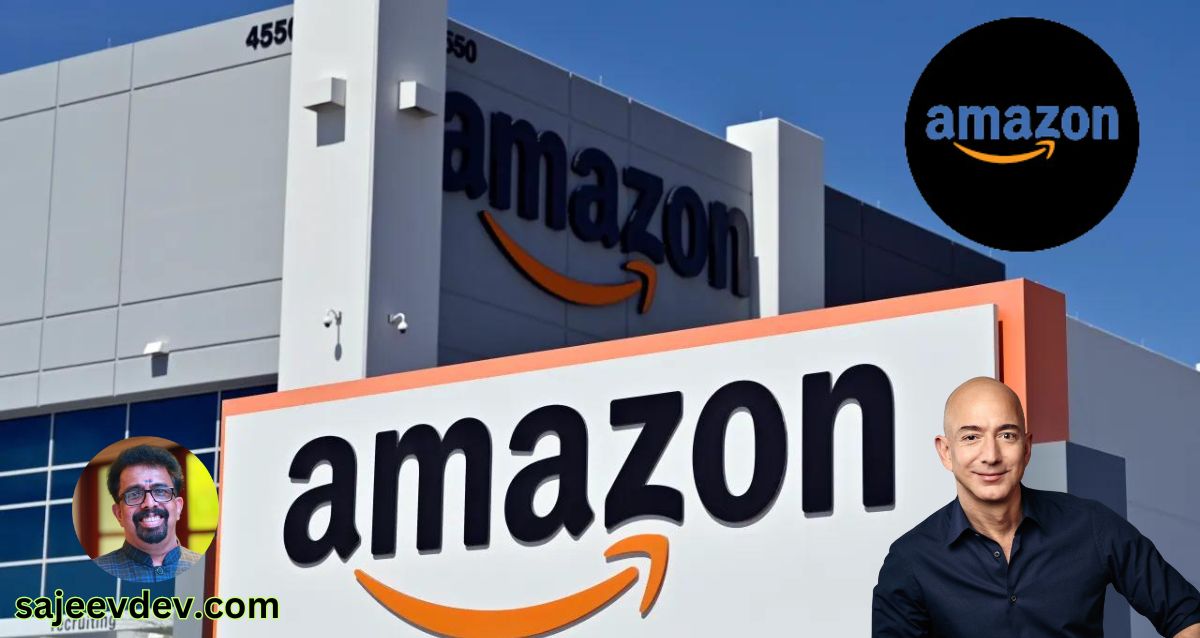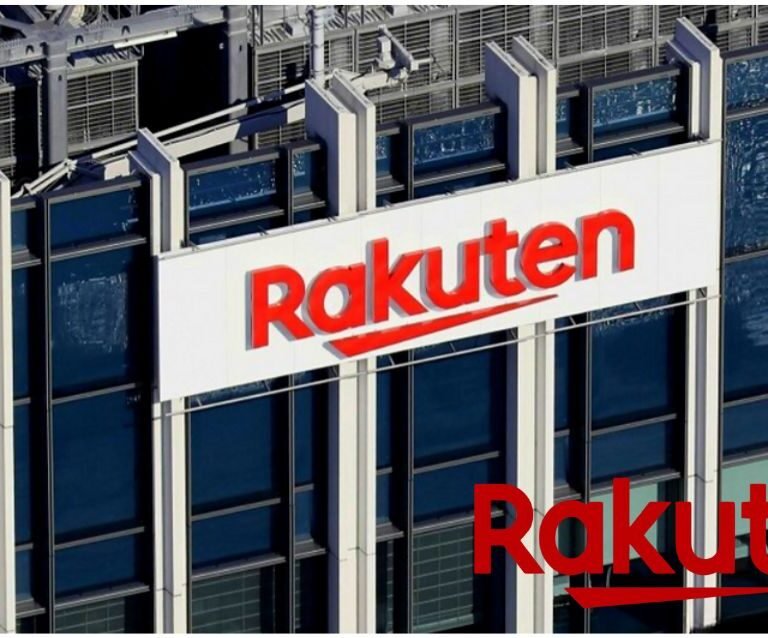Amazon’s Revenue Landscape
As the world’s largest e-commerce company, Amazon has solidified its position as a formidable player in the online retail market. In 2023, Amazon reported an astounding revenue of $514 billion, marking a significant milestone in its growth trajectory. This remarkable figure not only underscores the company’s impactful presence but also reflects the changing dynamics of consumer behavior and preferences in the digital shopping realm.
Amazon’s impressive revenue can be attributed to several key market segments that the company has effectively capitalized on. The e-commerce giant has diversified its offerings beyond traditional retail, venturing into various sectors such as cloud computing, digital streaming, and artificial intelligence. The Amazon Web Services (AWS) division, for instance, has emerged as a significant contributor to its overall revenue, providing a robust backbone for the company’s operations and enhancing its competitive edge in the technology sector.
Furthermore, Amazon’s strategic investment in logistics and fulfillment technology has allowed it to streamline its operations, improving delivery times and customer satisfaction. This enhancement in service quality has been pivotal in attracting a broader customer base, thereby amplifying its revenue. The company’s dynamic pricing strategies and extensive product range also cater to diverse consumer needs, making it a go-to destination for millions of shoppers across the United States.
In addition to its direct sales, Amazon’s marketplace model enables third-party sellers to reach a wider audience, further enriching the company’s revenue streams. This collaborative approach not only benefits Amazon but also fosters an ecosystem that supports small businesses. As we delve deeper into Amazon’s revenue landscape, it becomes evident that its innovative strategies and market adaptability play a crucial role in shaping the future of online retail.
The Growth of E-Commerce in the U.S.
The landscape of retail in the United States has undergone a significant transformation over the past decade, largely driven by the rapid expansion of e-commerce. In 2023, e-commerce sales in the U.S. reached approximately $1.15 trillion, accounting for 17% of total retail sales—a figure that illustrates the shifting consumer preferences towards online shopping. This growth reflects not only a change in the shopping habits of consumers but also a broader societal shift towards digital engagement, largely accelerated by the COVID-19 pandemic.
Amazon has been a dominant player in this marketplace, continuously innovating to enhance customer experience and expand its offerings. The company captured a significant portion of this e-commerce growth, with its market share estimated at nearly 40%. This formidable presence is largely attributed to Amazon’s extensive product selection, competitive pricing, and convenient delivery services, which have fundamentally reshaped consumer expectations regarding speed and efficiency in online shopping.
Consumer behavior has also evolved, with shoppers increasingly favoring the convenience of online platforms. According to recent studies, nearly 60% of U.S. consumers now prefer shopping online, a preference driven by factors such as accessibility, variety, and the ability to easily compare prices across different retailers. While traditional brick-and-mortar stores still play a role in retail, their growth has been significantly overshadowed by the meteoric rise of e-commerce giants like Amazon.
In comparative terms, when analyzing the growth trajectories of other retailers, it becomes evident that while various companies have benefitted from the surge in online shopping, none have managed to match Amazon’s agility and innovation. Companies such as Walmart have made substantial investments in their online sales infrastructure but still operate at a fraction of Amazon’s market share. This underscores Amazon’s pivotal role in driving e-commerce growth in the United States, setting the stage for its impressive revenue figures of $514 billion in 2023.
Key Strengths of Amazon: Fast Delivery and Customer Service
Amazon has established itself as a leader in the e-commerce industry, fundamentally due to its robust logistics and fulfillment network. This network enables the company to offer remarkably fast delivery services, which are crucial to its competitive advantage. The implementation of advanced supply chain strategies, including the utilization of fulfillment centers located near major urban areas, has significantly reduced shipping times. Customers increasingly expect rapid delivery, and Amazon’s commitment to meeting these expectations has played a pivotal role in fostering customer loyalty.
Central to this delivery efficiency is Amazon Prime, a subscription service that provides members with benefits such as free two-day shipping on millions of products. Prime not only accelerates shipping times but also enhances the overall shopping experience. The allure of these quick delivery options encourages customers to select Amazon as their primary online shopping platform, ultimately leading to increased sales volume. Furthermore, the convenience of Prime has turned many casual shoppers into loyal members, solidifying Amazon’s position in the market.
Beyond its logistics efficiency, Amazon’s customer service is another key strength that contributes to its growth and dominance. Amazon has invested heavily in creating a seamless customer experience from browsing to post-purchase support. Features such as easy product returns and 24/7 customer service enable users to resolve issues quickly and efficiently, which further enhances user satisfaction. The combination of fast delivery and reliable customer service promotes repeat purchases and encourages customers to recommend the platform to others.
The strategic interplay between fast delivery and exceptional customer service has become a hallmark of Amazon’s success. As the e-commerce landscape continues to evolve, maintaining these strengths will be critical for Amazon to uphold its competitive edge and cater to ever-changing consumer demands.
Extensive Product Range: A One-Stop Shop for Consumers
Amazon’s extensive product range is a key factor contributing to its remarkable revenue of $514 billion in 2023. The platform serves as a comprehensive marketplace, offering millions of products across diverse categories, including electronics, home and kitchen, books, clothing, beauty products, and groceries. This vast assortment not only satisfies the varied needs of consumers but also positions Amazon as a one-stop shop, reducing the necessity for customers to visit multiple stores, whether online or brick-and-mortar.
One notable aspect of Amazon’s product range is its inclusivity of various brands and price points. From high-end electronics to budget-friendly home essentials, the platform ensures that consumers can find products that fit their specific needs and financial considerations. Furthermore, Amazon also houses numerous third-party sellers who expand the inventory available to customers, providing niche products and unique items often overlooked by traditional retailers.
In contrast to brick-and-mortar stores, which may have limited shelf space and thus a constrained selection, Amazon’s virtual marketplace is nearly limitless. This feature not only enhances customer satisfaction but also fosters brand loyalty, as shoppers return to a platform where they know they can find an extensive array of products. The convenience of having everything in one place, paired with advanced search functionalities, enables consumers to navigate the site effortlessly, locating desired items more quickly than ever before.
Furthermore, the incorporation of user reviews and ratings enables customers to make informed purchasing decisions, thereby reducing the uncertainty that often accompanies online shopping. This transparency, combined with a wide-ranging inventory, gives Amazon a competitive edge over both traditional retailers and other e-commerce platforms. By continually expanding its extensive product offerings, Amazon solidifies its position as the leading online marketplace in today’s digital landscape.
Innovations that Set Amazon Apart
Amazon’s remarkable growth trajectory, culminating in a revenue of $514 billion in 2023, can be largely attributed to its innovations, which are pivotal in enhancing customer experience while simultaneously driving revenue. Among the most significant of these innovations is Amazon Prime, a subscription service that offers an array of benefits, including free shipping, access to streaming content, and exclusive deals. By creating a seamless shopping experience and adding immense value, Prime has cultivated a loyal customer base, encouraging repeat purchases and signups. The appeal of Amazon Prime lies in the convenience it offers, fostering a sense of belonging among its members.
Another transformative innovation is Alexa, Amazon’s voice-activated virtual assistant. Alexa has revolutionized the way customers interact with technology, and its integration into smart homes has further solidified its position in consumers’ daily lives. By facilitating hands-free control of various devices, making recommendations, and providing information, Alexa not only enriches user experience but also serves as a conduit for further Amazon shopping. The expansive ecosystem of Alexa-enabled devices allows for sophisticated marketing strategies and personalized shopping experiences that resonate with users, thereby enhancing brand loyalty.
Furthermore, Amazon Web Services (AWS) stands out as a cornerstone of Amazon’s business model. AWS provides comprehensive cloud computing services that power a vast range of businesses, offering scalability, reliability, and cost-effectiveness. This service supports not only Amazon’s internal operations but has also become a leading choice for global enterprises, significantly contributing to Amazon’s overall profitability. AWS reinforces Amazon’s brand as an innovator and reliable partner for businesses seeking to modernize their infrastructure.
Through the innovative nature of Amazon Prime, Alexa, and AWS, Amazon has established a multifaceted relationship with its customers. These groundbreaking services not only drive significant revenue growth but also reinforce the brand’s reputation as a leader in customer-centric innovation.
Amazon’s Global Footprint: Expanding Beyond the U.S.
Amazon’s expansion into international markets has been a strategic focus, allowing it to capitalize on the growing demand for e-commerce worldwide. The company has established its presence in numerous countries, including those in Europe, Asia, and Latin America. This expansion is not merely about entering new markets but also about tailoring its services to meet local preferences and regulatory requirements. For instance, in India, Amazon offers a unique marketplace that caters specifically to the diverse consumer landscape, which includes regional languages and various payment methods.
One of the significant advantages Amazon holds is its robust logistics network. By investing heavily in infrastructure, including fulfillment centers across various regions, the company ensures swift delivery services that enhance customer satisfaction. These investments allow Amazon to leverage its Prime membership in international markets, mimicking the success seen in the U.S. Furthermore, its technological innovations in logistics, such as drone delivery, position Amazon on the cutting edge of e-commerce logistics efficiency.
However, expanding beyond the U.S. also presents challenges. Regulatory hurdles, fierce local competition, and varying consumer preferences can complicate operations. For instance, in the European Union, Amazon faces scrutiny over its market dominance and compliance with strict data privacy laws. Similarly, in markets like China, local competitors such as Alibaba pose significant competition, forcing Amazon to continuously adapt its strategies.
The global e-commerce landscape is also marked by cultural nuances, which necessitates a deeper understanding of consumer behavior. Adapting the product offerings and marketing strategies to align with local trends is crucial for success. In Latin America, for example, increased internet penetration has opened new opportunities, but Amazon must navigate logistical challenges such as infrastructure limitations in certain regions.
Through careful consideration of these factors, Amazon aims to replicate the success it has experienced in the United States in various international markets, ultimately driving further growth and revenue.
The Role of Technology in Amazon’s Operations
Amazon’s remarkable revenue of $514 billion in 2023 can largely be attributed to its strategic integration of advanced technologies into its business model. At the forefront of this integration is the use of artificial intelligence (AI) and machine learning, which play a crucial role in data analytics. These technologies enable Amazon to process vast amounts of customer data, allowing for sophisticated insights into shopping behaviors and preferences. By analyzing this data, Amazon can tailor its recommendations, optimize pricing strategies, and enhance personalized marketing efforts, leading to improved customer satisfaction and loyalty.
Automation has also become a cornerstone of Amazon’s operational efficiency. The company has invested heavily in robotic technology within its warehouses, which transforms the traditional logistics model. Automated systems are utilized to handle tasks such as sorting and packing products, thereby reducing human error and increasing processing speed. This level of efficiency not only minimizes operational costs but also allows for faster delivery times, a critical component of Amazon’s value proposition to its customers.
Moreover, Amazon leverages technology in its fulfillment network through innovative systems such as Amazon Prime Air, which aims to deliver packages via drones. Such initiatives reflect a commitment to leveraging cutting-edge technological advancements to enhance service delivery. Additionally, the data collected from various touchpoints within the supply chain feeds into machine learning algorithms that continually improve inventory management and demand forecasting, ensuring that the right products are available at the right time.
Incorporating these technologies not only enhances operational capabilities but also allows Amazon to maintain a competitive edge in the retail landscape. As the company continues to evolve, its investment in technology will undoubtedly remain a pivotal factor in driving sustained growth and superior customer experience.
Future Outlook: What Lies Ahead for Amazon?
As we assess Amazon’s trajectory beyond its impressive $514 billion revenue in 2023, several factors come into play that could significantly shape the company’s future. The e-commerce landscape remains highly dynamic, influenced by shifts in consumer behavior, an evolving competitive environment, and rapid technological advancements. These elements will collectively inform Amazon’s business strategy in the coming years.
One of the key drivers of Amazon’s growth will be its ability to innovate and adapt to changing market demands. Emerging technologies such as artificial intelligence (AI) and machine learning are expected to enhance customer experience through personalized recommendations and improved logistics. Amazon has already invested heavily in these areas, which positions the company favorably as it looks to streamline operations and deliver products more efficiently. Furthermore, advancements in automation within warehouses could reduce operational costs significantly, thereby allowing Amazon to maintain competitive pricing.
Competition also plays a crucial role in Amazon’s future. Rivals such as Walmart and Target are increasingly embracing omnichannel strategies that integrate digital and physical shopping experiences. In response, Amazon may need to enhance its physical presence, perhaps by expanding its network of Amazon Go stores or exploring additional partnerships with brick-and-mortar retailers. The competitive landscape will necessitate continuous innovation and possibly even diversification into new markets to secure a larger share of consumer spending.
Moreover, shifting consumer values towards sustainability and ethical business practices may lead Amazon to reevaluate its supply chain and fulfillment strategies. Increased transparency and sustainability initiatives could not only improve brand perception but also attract a broader customer base. As Amazon navigates these multifaceted challenges and opportunities, its commitment to customer satisfaction will likely remain a cornerstone of its strategic vision.
In conclusion, while the road ahead contains both challenges and opportunities, Amazon’s capacity for adaptation, innovation, and commitment to customer service will be pivotal in maintaining its market dominance and fostering sustained revenue growth.
Amazon’s Position in the E-Commerce Ecosystem
As of 2023, Amazon continues to assert its position as a formidable leader in the e-commerce ecosystem, boasting an impressive revenue of $514 billion. This financial milestone not only emphasizes its vast market reach but also highlights the extensive range of products and services that the platform offers. Through its combination of user-friendly interfaces, innovative technologies, and strategic expansions, Amazon has successfully created an unparalleled shopping experience that attracts millions of consumers worldwide.
Key to Amazon’s success has been its ability to adapt to changing market conditions and consumer preferences. The implementation of advanced algorithms for personalized recommendations, along with a robust distribution network, allows the company to cater effectively to a global audience. Moreover, Amazon’s investment in cloud services, particularly through Amazon Web Services (AWS), provides an additional revenue stream that enhances its overall financial health. This diversified business model allows Amazon to maintain resilience in the face of competition from other e-commerce players.
Looking ahead, several factors will likely continue to sustain Amazon’s competitive advantage. Its significant investment in automation and artificial intelligence will streamline operations, ultimately improving efficiency and reducing costs. Furthermore, the ongoing expansion into emerging markets presents new growth opportunities, ensuring that the company maintains its market dominance. Additionally, focus on sustainability and ethical practices could foster greater consumer loyalty, enhancing brand reputation in a world increasingly concerned with social responsibility.
In summary, Amazon’s dominance in the e-commerce landscape as of 2023 can be attributed to its innovative strategies, extensive product offerings, and commitment to meeting customer needs. As the company navigates future challenges and opportunities, it remains a pivotal player, continuously shaping the future of online retail.







